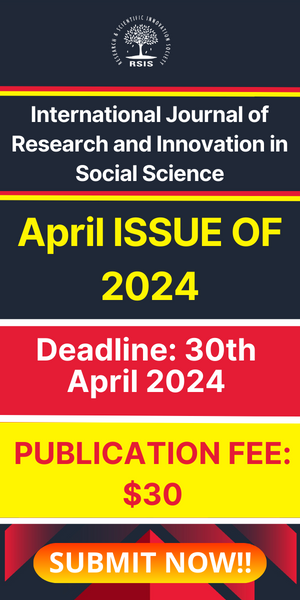Operation Melioration in Permanent Magnet Machine by using Dual Stator Design
- April 20, 2019
- Posted by: RSIS
- Category: Industrial & Systems Engineering
International Journal of Research and Scientific Innovation (IJRSI) | Volume VI, Issue IV, April 2019 | ISSN 2321–2705
Operation Melioration in Permanent Magnet Machine by using Dual Stator Design
Nil Patel
R & D, Cismac Solution Pvt. Ltd, Gujarat, India
Abstract—Miniature permanent magnet (PM) brushless motors used in Industrial power tool application require high torque and efficiency. Further, the size constraints imposed by the hand-held tool requires the use of high torque density motor. Therefore, by utilizing the stator slot area to achieve the required number of amperes turns is important while considering the low-cost motor solution. Existing single-piece stator lamination design has poor conductor fill factor in the slots due to manual insertion of the coils in the narrow slot opening. Hence to solve the poor slot fill factor (SFF) and to simplify the winding process, the stator lamination is split into two-parts and the pre-wound coils are placed outwards in the open slots. This results in increased SFF and result into 22% improvement on motor regulation. The FEA based the simulation is carried out and simulated motor performance is validated with experimental results. In addition, the challenges during the prototype motor build is discussed.
Keywords— PM synchronous motor, cogging torque reduction, Laminations, Full pitch winding
I. INTRODUCTION
Traditional slotted permanent magnet synchronous motors (PMSM) uses two-layer full pitch winding and the designed slot opening is narrow considering the performance requirements such as sinusoidal back-emf shape and low detent/cogging torque. Also, due to the manual winding insertion and subsequent use of retaining wedges, the poor slot fill factor (SFF) is encountered. This results in increase in winding resistance for the same motor torque constant. Further this traditional way of filling the conductor in the stator slots increases the production hours and highly dependent on the skilled workman ship.
Few research works are carried out in this topic and presented in the literature. Ref. [1] details the concentratedly wound coils on a plurality of teeth of a stator core. It is shown that a high space factor of coils in slots in a stator core and stable output characteristics using the core segments are possible. The multipart stator or open slotted outwards design is presented in [2]. This design permits the loading of the form-wound coils from the outside. The stator modules consist of soft magnetic composite (SMC) material is presented in [3]. By making the use of a concentrated winding configuration, the stator structure is simplified with the benefit of less end-winding losses [3]. The segmented stator design is presented in [4].


